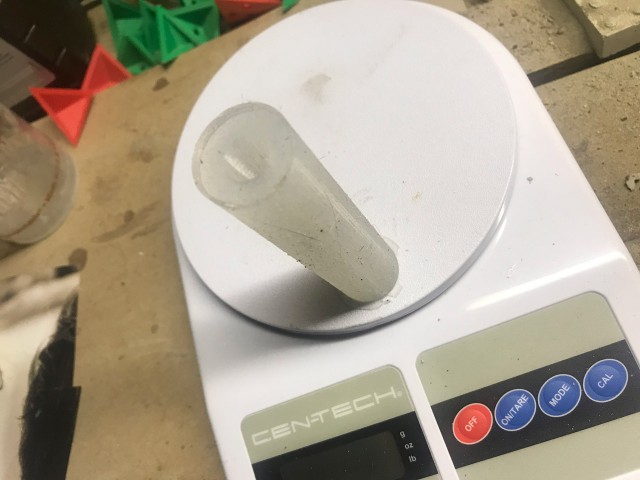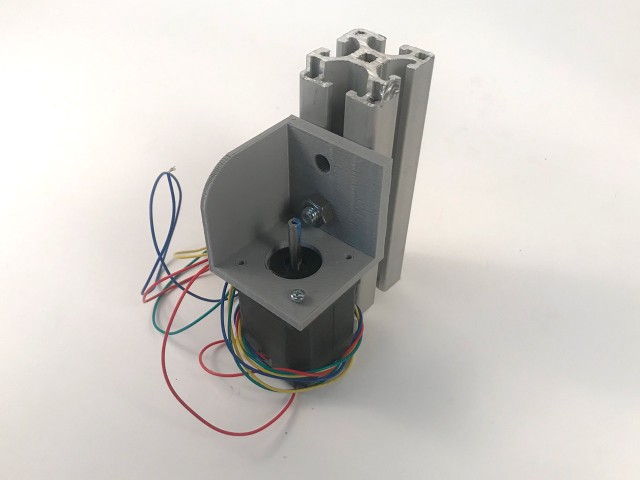
I’ve been experimenting with casting for the last year or so and typically my “experiments” come out terrible, mainly because I try weird things, but sometimes I sort of get it right…
This time I made a silicone mold of a model of a glue stick for a hot glue gun and it mostly worked fine. I modeled a glue stick and tall cylindrical container for it using OpenSCAD and then 3D printed the two pieces. The idea being I’d place the “stick” into the container and then pour silicone in to create the mold.

I had a small amount of silicone we were going to throw out at work because it wasn’t enough to do anything useful with, and it was just enough after scraping everything out of the two containers and mixing it together.

Once again I had to destroy the original mold master to get the mold out, but since it was printed using PLA I just smacked it with a hammer a few times and peeled away the plastic to get the silicone mold out in good condition.

I could not find the cheap little cooking pot I bought at Goodwill a few years ago for melting things so I grabbed an old metal can, made a makeshift gaff tape handle, and melted down some old candle wax to pour into the mold.

Hey, it worked! A wax stick the same size as a glue stick you would use in a hot glue gun. ;)
Oh, see those rubber bands? They hold the mold together because I split it down the side to allow for getting the wax out of the mold. I may have wrapped the mold too tight or not aligned properly because the first stick wasn’t totally straight.

Here’s the second one… much better. You can see the split in the mold. I just ran an X-ACTO blade down the sides to split it.

Now, to ramp up production I may need to make a lot more molds, or come up with an alternative. Here’s a method using a metal tube and parchment paper that might work. Honestly I think I prefer silicone molds but this might be a good way to get really long sticks.

The next part of this experiment requires a hot glue gun, and most likely, disassembling it for the heating element. Stay Tuned!




















